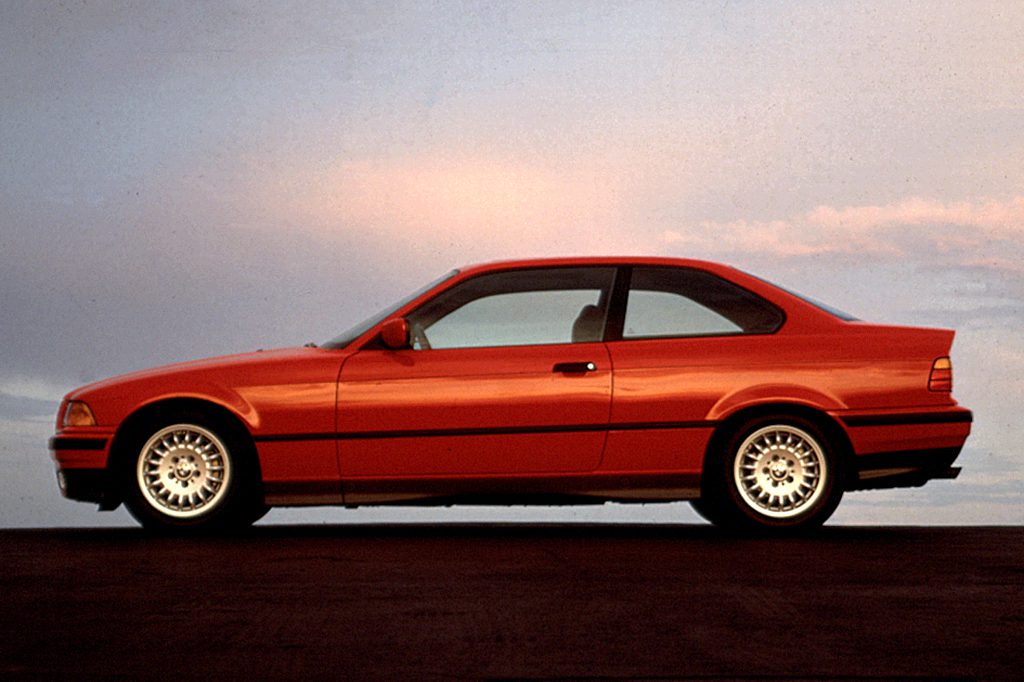| Premium compact car; Built in USA, Germany |
|
|
| Good condition price range: $1,800 – $7,500* |

1992 BMW 325is 2-door coupe

1993 BMW 325i 4-door sedan

1993 BMW 325i interior

1995 BMW 325i 2-door convertible

1995 BMW 325i 2-door convertible interior
| Pros: |
|
| Cons: |
|
Like their bigger brothers, 3-Series BMWs are far from cheap secondhand, but their many fans are willing to lay out the extra bucks for top-notch roadholding and high-quality materials.
Overview
Completely restyled for 1992, the 325i sedan borrowed its rounded lines from the bigger BMWs. Wheelbase grew by 5.1 inches, overall length by 4.3 inches. Interior volume expanded only modestly. Switching from a single overhead camshaft to dual cams, the inline 2.5-liter six-cylinder engine added 21 horsepower. A 4-speed, 3-mode automatic transmission was optional. Standard fittings included a driver-side airbag and antilock brakes. Convertibles, however, stuck with the previous design until 1994.
Yearly Updates
| 1993 325i/328i/323i Six-cylinder engines adopted variable valve timing that was claimed to boost low-speed response and increase fuel economy. A sport suspension joined the option list. 3-Series cars also gained body-color bumpers and a fold-down center armrest. Sedans could now be ordered with optional fold-down rear seats. |
| 1994 325i/328i/323i All 3-Series models gained a passenger-side airbag. BMW’s ASC+T traction control became optional. Starting in summer of 1993, convertibles adopted the smooth design of BMW sedans, abandoning the old profile. Four-passenger convertibles shared the coupe’s lower body styling, but wore unique rear sheetmetal. A power top stows beneath a solid rear cover. A pop-up “Rollover Protection System” was optional on convertibles. A high-performance M3 coupe debuted in spring 1994, packing a 240-horsepower 3.0-liter engine and manual shift, with a firmer suspension and 17-inch tires. |
| 1995 325i/328i/323i The 325 saw only minor changes for 1995. |
| 1996 325i/328i/323i A bigger (2.8-liter) engine went into 1996 models soon after the start of production, and the cars were renamed 328i. The M3 high-performance coupe could have an available 5-speed automatic transmission. |
| 1997 325i/328i/323i All BMWs had traction control in ’97. The high-performance M3 now came as a 4-door sedan as well as a 2-door coupe. BMW’s twin kidney grille was reshaped to match the new 5-Series. Side marker and turn signal lamps were redesigned. |
| 1998 325i/328i/323i BMW introduced an old engine to the 3-Series lineup for 1998, the 2.5-liter inline-six that had been standard on the 1992-95 models. Called the 323, the new model was available only in coupe and convertible bodystyles. Side airbags are now standard on all models, and the convertible gets a full-automatic power top. The 3-Series was all new for 1999. |
